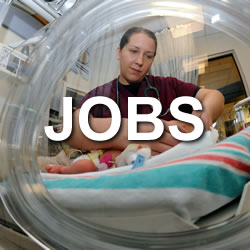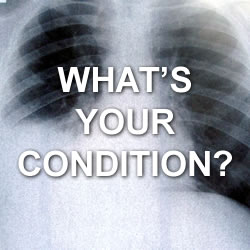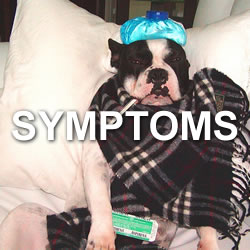CT Coronary Angiogram
Coronary CT angiography will, in my opinion, be the new gold standard for coronary imaging in the future. Quick, non-invasive, low radiation exposure and absolutely spectacular image quality will make this a test used almost universally in any patient with suspected clinical coronary disease - Steven Lome, DO, RVT

image by: Openaccessjournal
HWN Recommends
Love Your Heart: Coronary CT angiogram
You have probably heard of a stress test to determine any issues with your heart. However, here's another test that doctors say can give patients more ease of mind, and still know what is happening in their heart.
In November, Susan Nichols started having classic heart attack symptoms, including chest pains and shortness of breath. As a former paramedic, she knew something wasn't right.
"One morning, I got up and was really sick, it just felt off, and I took my blood pressure and my blood pressure was extremely high it was almost 200/128," Nichols said.
After a visit to the hospital, Dr. Ryan Masters suggested she get a coronary CT angiogram done.
"(It's)…
Resources
 The Rise of the Coronary CT Angiogram
The Rise of the Coronary CT Angiogram
Stress tests are a thing of the past. Make way for coronary CT angiography. Wide-eyed medical students might gather around a treadmill in 20 years to observe a patient doing a traditional stress test as a “rarity” — to identify valvular disease, detect arrhythmias and gauge functional capacity, but not as a means to diagnose occlusive coronary disease.
 Coronary CT Angiography Versus Traditional Care
Coronary CT Angiography Versus Traditional Care
The ‘pro’s’ to using CCTA are compelling. If normal, we can convincingly exclude CAD as the etiology of the patient’s chest pain. I like tests that convincingly exclude diseases, and in general practice most tests that we use on a daily basis can’t do that.
 Coronary CTA for Suspected CAD Shows Advantages in Predicting Hard Outcomes Over 10 Years
Coronary CTA for Suspected CAD Shows Advantages in Predicting Hard Outcomes Over 10 Years
On the heels of SCOT-HEART, this study begs the question: should anatomy be considered at least on par with stress testing for risk stratification?
 Coronary CTA Superior to Standard Care in Stable Chest Pain
Coronary CTA Superior to Standard Care in Stable Chest Pain
Coronary computed tomographic angiography (CTA) was associated with a lower 5-year mortality rate from coronary heart disease (CHD) or nonfatal myocardial infarction in patients with stable chest pain compared with standard care alone...
 Should I Get a Coronary CT Scan?
Should I Get a Coronary CT Scan?
There are 2 different types of coronary CT scans: a coronary CT angiogram and a coronary artery calcium scan. Both tests take place inside a standard CT scan machine, but there are important differences between them.
CTA an Effective Gatekeeper in Invasive Angiography Candidates With Suspected CAD
Selective referral for invasive angiography based on CTA results did not increase 1-year MACE and offered better diagnostic yield.
New Heart Disease Test Brings Higher Costs and More Procedures
When compared to previous, exercise-based tests, this newer screening method turns out to be leading to many more surgeries—and subsequently higher medical costs—without the data to show that it's actually helping people live longer or stay healthier, according to an analysis published online Tuesday in JAMA, The Journal of the American Medical Association.
Radiation from heart imaging: What you need to know
Certain tests involve small amounts of radiation. Here's some perspective on the benefits and risks.
The Tell-Tale Heart Test: Stress Test vs. CT
The worst kind of assurance is false assurance. And that's been one of the problems with conventional cardiac stress tests, including the venerable EKG treadmill test, where you get all wired up and walk for your life.
Weighing the Costs of a CT Scan’s Look Inside the Heart
Dr. Karlsberg and other cardiologists who support widespread use of CT heart scans argue that they can reduce the need for other tests — like conventional angiograms, which can find plaque but require a catheter to be threaded through the arteries. Conventional angiograms are more expensive than CT scans and carry their own risks. If a CT heart scan finds plaque that a doctor intends to treat with a stent, a conventional angiogram will still be necessary to determine where and how to implant the stent. So a CT scan does not always eliminate the need for a conventional angiogram.
And Here’s Why CTCA Is Useless
In the Emergency Department, that is, at least. A few years ago, there were several major studies evaluating the safety of a CT coronary angiogram-based study for the evaluation of chest pain in the Emergency Department. The constant challenge, however, has been specificity – not only with respect to whether the CT can accurately detect stenoses, but the clinical relevance of the stenoses.
 CCTA doesn’t help: The evidence
CCTA doesn’t help: The evidence
Since publishing my 5 part series illustrating that stress tests are useless (also available as an EM Cases Journal Jam Episode and on EM:RAP), I have received a number of requests to review coronary CT angiography (CCTA). After all, stress testing is old technology. CCTA is newer and therefore obviously better. We can get immediate images of the coronary arteries, and with the newer FFR technology, we can also get physiologic information about potentially flow limiting lesions. What’s not to like?
 Love Your Heart: Coronary CT angiogram
Love Your Heart: Coronary CT angiogram
You have probably heard of a stress test to determine any issues with your heart. However, here's another test that doctors say can give patients more ease of mind, and still know what is happening in their heart.
Angioplasty.org
Whether it's called multislice CT (MSCT), multidetector CT (MDCT), cardiac CT or cardiovascular CT, the CT stands for "Computed Tomography", a way of measuring parts of the anatomy by sections (originally known as "Computed Axial Tomography" or CAT scans).
RadiologyInfo.org
Patients undergoing a CCTA scan receive an iodine-containing contrast material as an intravenous (IV) injection to ensure the best possible images of the heart blood vessels.

Introducing Stitches!
Your Path to Meaningful Connections in the World of Health and Medicine
Connect, Collaborate, and Engage!
Coming Soon - Stitches, the innovative chat app from the creators of HWN. Join meaningful conversations on health and medical topics. Share text, images, and videos seamlessly. Connect directly within HWN's topic pages and articles.













